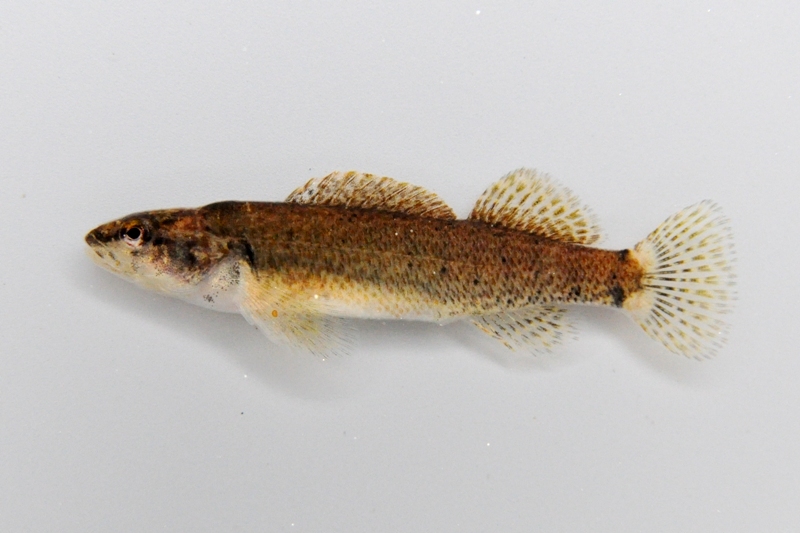Tippecanoe Darter
(Etheostoma tippecanoe)


The tippecanoe darter is one of Ohio's two smallest species of fish rarely growing to be more than 1.5 inches long, the other is the least darter. The photo to the left is an adult male and below is an adult female.
Description
Tippecanoe darters are very small even as adults never reaching a length of more than 2 inches, and are usually 1.5 inches or less. They have two distinctive light spots on the base of their tail one above the other that are close together giving the appearance of an hour-glass shaped marking. Just in front of these light spots they have a dark vertical bar that is also often broken into two spots with the lower one being larger than the one above it. Male tippecanoe darters have an over all golden brown body color. They often have multiple dark vertical bars along their side which are most visible near the tail. Their lower sides and throat are bright orange. They have a blue or black breast. All of their fins are outlined with a wide golden orange margin. The webbing between the first 2-3 spines of their first dorsal fin is darkly pigmented near the base of the fin forming a dark blotch. The center portion of their pelvic fins is a dark blue-black color. Female tippecanoe darters have an over all brown body coloration with a light cream colored belly. Females also have dark vertical bars on their sides that are most visible near the tail but they are usually less distinct than those on a male. All of their fins are clear with many dark spots scattered across them often forming rows.
Habitat and Habits
The tippecanoe darter is found in medium to large streams and rivers in the Ohio River drainage in Ohio. They are found in riffles of moderate current with a substrate of gravel and small cobble sized rocks. They spend most of there time in crevices between these rocks, and because of their small size they are often difficult to find. Historically the tippecanoe darter was found in the Walhonding River and the lower Muskingum River of the Muskingum drainage and in the Olentangy River, Big Walnut Creek, Big Darby Creek, and Deer Creek of the Scioto River drainage. Since the early 1980's they have made an impressive expansion of their distribution in the Scioto River drainage where they can now be found in nearly every major tributary to the Scioto River and the main-stem of the Scioto River from Columbus down stream to the Ohio River. Unfortunately they appear to have been extirpated from the Muskingum River drainage with the exception of a small population in the lower end of the Muskingum River. The expansion of the remaining Muskingum River population is unlikely because of the many dams upstream of its location.
Reproduction and Care of the Young
The tippecanoe darter spawns later in the summer than most species of darters. It is not uncommon to find females still full of eggs well into August. Most spawning probably occurs from late June through early August. Males guard small territories usually in 6-12 inches of water often near the top or bottom end of riffles. Eggs are guarded by the male until they hatch. No further parental care is given after the eggs hatch.